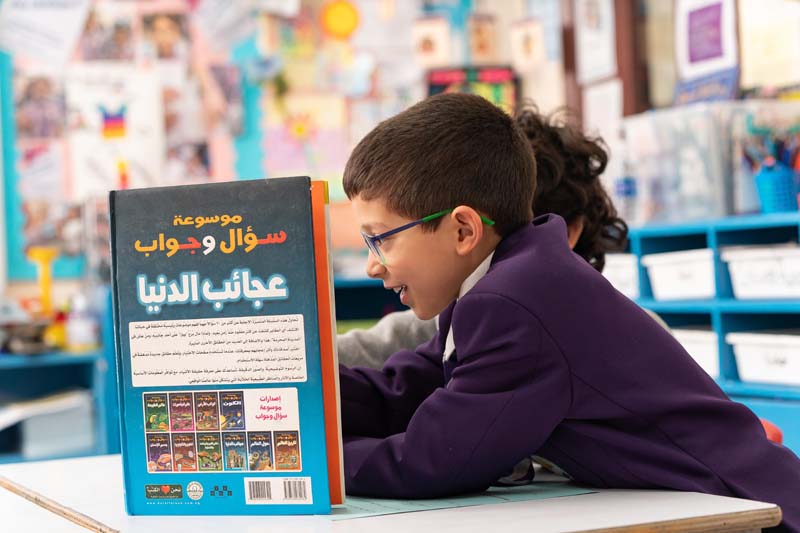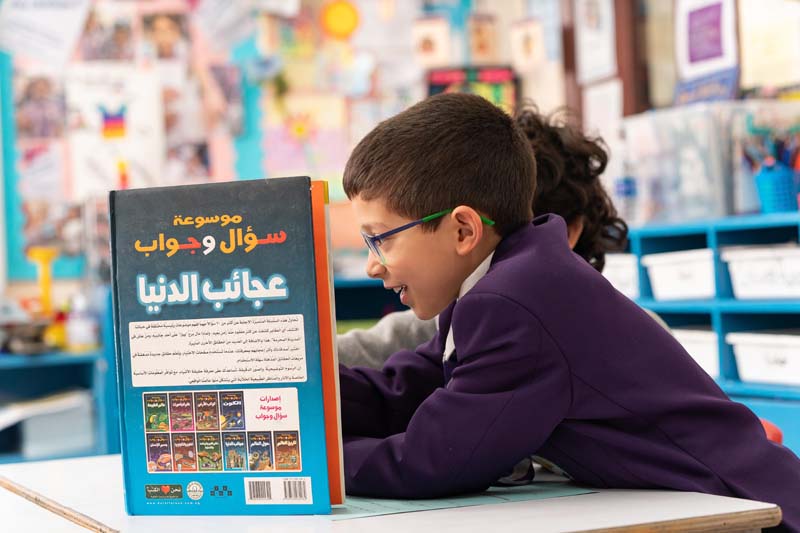We use cookies to improve your online experiences. To learn more and choose your cookies options, please refer to our cookie policy.

A Parent’s Guide: Reading with Children at Home For adults, the process of following written text with our eyes comes easily, but is this activity really as simple as it seems? While it looks as though we track across the letters in the lines they are written, encountering each letter, syllable, word, clause and sentence one-by-one, our eyes are actually darting across the page in an attempt to construct an understanding of the text as a whole. So, it makes sense that learning to read from scratch is a big challenge for students and for parents too, who want to guide them as best they can.

This blog is written by Adam Shackleton, Head of Literacy at Nord Anglia International School Shanghai, Pudong.
For adults, the process of following written text with our eyes come easily, but is this activity really as simple as it seems? While it looks as though we track across the letters in the lines they are written, encountering each letter, syllable, word, clause and sentence one-by-one, our eyes are actually darting across the page in an attempt to construct an understanding of the text as a whole. So, it makes sense that learning to read from scratch is a big challenge for students and for parents too, who want to guide them as best they can.
Learning to read
The goal of any reading teacher is to improve the fluency of their students. This is the first of the three ‘pillars’ of reading: fluency, language comprehension and background knowledge.
Decoding the words on a page consumes the limited working memory of a child and, with less space to consider what is being read, children can struggle to make meaning. As with any skill, practice equals progress. Once they have read the same words multiple times, they no longer need to decode it and so the pace of their reading improves and their working memory has the capacity to consider the meaning of the words on the page.
As an international family of schools, many of our pupils do not speak English as a first language and, therefore, they will need to develop their vocabulary to improve language comprehension. To fully understand a text, children need to be able to recognise and define at least 95% of the words on the page. In many cases, they will need to understand 98% of the words they read to make meaning. So how can we overcome this barrier to reading comprehension?
Firstly, always bring conversation into the heart of reading. Encourage your child to ask questions about words which they do not understand and use this opportunity to define unfamiliar words. It is important to expose your child to the English language as much as possible. This could happen through socialising and playing in English, listening to English audiobooks, or watching movies or television in English.
Mastering a new language takes many years and sometimes we need to teach new words explicitly to children before they are asked to read independently or with their friends. Teachers carefully select and teach words they believe the children will find challenging while also responding to words which they did not immediately anticipate. Dialogue is key to this process: we can only help if we’re asking questions or the children are! Mimic this process at home and encourage your child to get curious about the words they don’t know.
The second big aspect related to improving language comprehension is the importance of background knowledge. As parents, we consider ourselves fairly competent readers. However, when we are confronted by texts which require extensive background knowledge to understand, we can find ourselves stumped. Take this example:
Force on a conductor (at right angles to a magnetic field) carrying a current
= magnetic flux density x current x length
This is an extract from a GCSE paper and whilst all of us will have studied science in school, we may still struggle to derive meaning from it without also having the requisite background knowledge…
It is important to remember that the knowledge of your child is much smaller than our own as adults, so they are going to struggle to apply meaning to most of what they encounter. For young children in particular, their experiences will be limited because they’ve only been storing new memories for a few years. Again, bring talk into your reading time with your child and try to offer a broader context to the text so that your child can begin to place the narrative within a bigger picture, relating it to something they already know.
Older children may be reluctant to read aloud with their parents, but it is important that they do so you can help them if they are struggling. Remarkably, many children are unable to actually stop themselves and question whether or not they’ve understood their reading without someone asking them!
Whilst talk is key to developing necessary background knowledge, children can also use technology to watch videos, for example, which will help to develop their understanding. For instance, watching something about the Victorians could help your child before they read ‘Oliver Twist’ by Charles Dickens. In doing so, the children will have better idea of what a ‘workhouse’, ‘orphanage’ and ‘gruel’ is before they encounter it in the text. It will help them to apply a visual context to terms which would otherwise be hard to relate to.
And remember…
Reading is a complex and unnatural skill which takes many years to develop and refine. Persistence and practice are key, so make sure you spend time at home reading to and reading with your child every day.